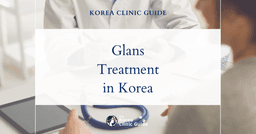Circumcision
Description
Circumcision is a surgical procedure performed to remove the foreskin, which is the layer of skin covering the head of the penis. The procedure can be performed on infants, children, and adults but is most commonly done in newborns. The process often begins with obtaining informed consent from the patient or the parents in the case of a newborn. For infants, the procedure is generally quick and done in clinical settings. The baby is typically positioned on a specialized board to prevent movement and is given a local anesthetic, such as a topical cream or an injection, to numb the area. In some cases, a pacifier dipped in sugar water is also used to help soothe the baby. **The next step involves disinfecting the genital area with an antiseptic solution. A special clamp, such as the Gomco clamp, Plastibell device, or Mogen clamp, is then used to secure the foreskin and protect the glans (head of the penis). The clamping device minimizes bleeding while allowing the surgeon to safely remove the foreskin with a scalpel. Once the foreskin is removed, the area is carefully inspected for any signs of excessive bleeding or other complications. The wound is then typically covered with a sterile dressing and an antibiotic ointment to promote healing and reduce the risk of infection. Post-procedure care includes monitoring for signs of infection, keeping the area clean, and applying any recommended ointments or dressings as instructed by the healthcare provider.
Ailments treated by this procedure: Redundant Foreskin, Tight Foreskin, Phimosis, and Recurrent Balanitis
Search
Categories
Related Posts




Top Circumcision Clinics
Blue Urology
Yeongdeungpo Station
Free consultation from the clinic
Blue Urology in Yeongdeungpo provides comprehensive, patient-centered care for urinary and men’s health concerns. General and Diagnostic Procedures Cystoscopy: A thin scope is inserted through the urethra to inspect the bladder and urethra. It helps diagnose causes of blood in urine, recurrent infections, pain, or urinary blockage. Uroflowmetry: A noninvasive test that measures how fast and how much you urinate. It helps evaluate urinary obstruction, weak bladder, or treatment results. Urodynamic testing: A set of tests that measure bladder pressure and function during filling and voiding. It guides treatment for incontinence, urgency, or difficult urination. Prostate ultrasound: An ultrasound probe images the prostate to assess size and structure. It evaluates nodules and helps guide targeted biopsies. Prostate biopsy: Small tissue samples are taken from the prostate using a needle under ultrasound guidance. Pathology checks for cancer to confirm diagnosis and plan care. Prostate and Bladder Care Transurethral Resection of the Prostate (TURP): A surgical scope removes excess prostate tissue through the urethra to relieve blockage from BPH. It improves urine flow and reduces frequency, urgency, and nighttime urination. Laser prostate surgery: A laser is used through a scope to remove or shrink obstructing prostate tissue. It aims for faster recovery and less bleeding than traditional surgery. Botox injection for overactive bladder: Botulinum toxin is injected into the bladder wall via cystoscopy to calm overactivity. It reduces urgency, frequency, and leakage when medications are not enough. Pelvic floor therapy and biofeedback: Guided exercises strengthen pelvic muscles to improve control. It helps stress incontinence and supports recovery after prostate treatments. Stone Management Extracorporeal Shock Wave Lithotripsy (ESWL): Focused sound waves break kidney or ureteral stones into small fragments. The pieces are then passed naturally with urine. Ureteroscopy (laser stone removal): A thin scope is passed into the ureter or kidney to see and fragment stones with a laser, then remove them. A temporary stent is sometimes placed to keep urine flowing and reduce swelling. Stone analysis and prevention plan: Passed or removed stones are analyzed for composition. Diet, hydration, and medications are tailored to reduce the chances of new stones. Men’s Health and Fertility Vasectomy: The vas deferens tubes are sealed through tiny skin openings for permanent contraception. It is an outpatient procedure with quick recovery and does not affect sexual function. Varicocele repair: Enlarged scrotal veins are tied off through a small incision to improve comfort and semen quality. Microscopic techniques reduce pain, recurrence, and complications. Erectile dysfunction evaluation and treatment: Testing and counseling identify causes and options such as medication, vacuum devices, or injections. Care is individualized to restore reliable erections and sexual confidence. Premature ejaculation treatment: Behavioral strategies, topical anesthetics, and medications are combined to improve control. Counseling addresses performance anxiety and relationship factors. Scrotal and Penile Surgery Circumcision: The foreskin is removed to treat recurrent infections, scarring, or personal preference. Modern techniques focus on precision, comfort, and cosmetic outcome. Hydrocele repair: A fluid-filled sac around the testicle is removed or repaired through a small scrotal incision. The goal is to relieve swelling, heaviness, and discomfort. Spermatocele removal: A benign cyst arising from the epididymis is excised while preserving nearby structures. Surgery relieves lump-related discomfort and cosmetic concerns. Penile curvature correction: Sutures are placed to straighten curvature that interferes with function. This improves sexual function and reduces pain from Peyronie’s disease.
learn more



